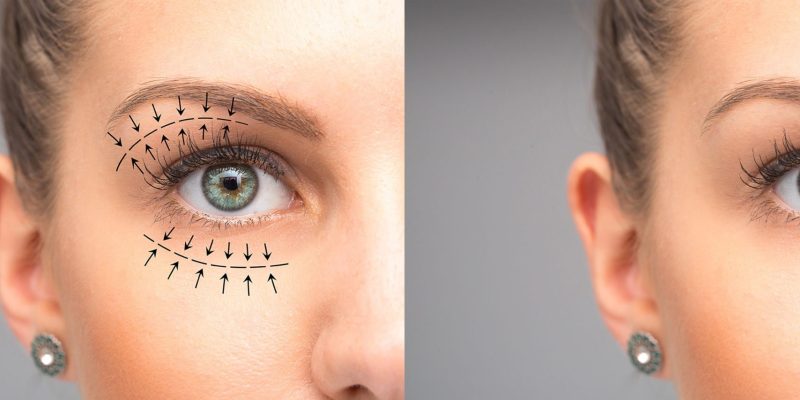How T.U.B.A. Surgery is Performed in NYC
How T.U.B.A. Surgery is Performed in NYC
Since T.U.B.A. Surgery is often performed in approximately 20 to 30 minutes by the most experienced surgeon – Dr. Grossman, this procedure is most commonly executed under intravenous (IV) sedation, also sometimes referred to as Light Sleep (Twilight), IV sedation or conscious sedation, combined with local anesthesia. This anesthesia consists of two parts, (1) intravenous injection or through an intravenous drip system of a sedating drug meant to cause a light sleep, hence the name, and (2) injections of dilute Lidocaine/Marcaine mixture into the treatment/surgery area. The IV sedation drugs promote sleep, loss of memory, inability to feel pain, etc.. The local anesthesia provides additional pain relief and decreases the chance of bleeding in the incision or dissection areas by constricting the blood vessels.
Please click on any image for a larger version. Graphics will load in a new window for ease of reference.
Just before your surgery, you will speak with Dr.Grossman, be marked for surgery and then taken to the operating room. These markings will indicate where the tunnels will follow up to the breast as well as the pocket dissection dimensions and lowering of the mammary fold (crease under the breast), if necessary. The diagram to the left and photograph to the right will further help you visualize and understand where these markings will be placed.After you have been sedated, prepped and stabilized your surgeon will perform the injections of local anesthetic around and in the navel and all around your treatment area. He will then make the appropriate incision in your navel and begin local dissection of the tissues around the umbilicus (navel).
He will then insert a tunneling device which will be used to tunnel from the umbilicus to the breasts. Blunt (no cut technique) dissection is used to separate the fatty tissues from the navel entry point to a predetermined point underneath the breasts.
After both tunnels are created, the tunneling device or an endotube is inserted under the breast mound. The diagram depicts a sub-glandular pocket being inspected for correct placement for the pocket formation. Sub-pectoral placement however is more preferred with T.U.B.A. If sub-pectoral placement is desired, the endotube is further inserted under the pectoralis major muscle to bluntly dissect it away from the chest wall and pectoralis minor muscle. The pectoralis major is the larger of the two chest muscles which branch from the shoulder and arm. This is generally the muscle that you would tone up by performing a butterfly curl or bench press. With this placement a more natural slope of the upper poles of the breast mound can be achieved and there is less breast droopiness in the future.
After and sometimes during the formation of the tunnels or general dissection, an endoscope, which is a small camera, will be inserted to ascertain the correct formation and placement of said tunnel. Once the endoscope is inserted through the navel, Dr. Grossman will be able to see via a monitor where and what has been done or what still must be done in order to achieve a properly created implant pocket.
After the tunnels have been successfully created either above or below the pectoral muscle, the endoscope is removed. Next, a tissue expander (basically a balloon with an attached tubing), as depicted on the left, will be rolled up on both sides so that it will easily fit within the front of the endotube. There will be a long fill tube attached to the expander so that it can be inflated.
The tissue expander will be pushed by the endotube and situated where the pocket will be made. In this depiction the tissue expander has been placed in the sub-glandular position. Your surgeon will then begin to fill the tissue expander with saline using a liquid pump.
The tissue expander is filled approximately one and one-half (1 1/2) times the desired end fill volume. The breast and connective tissues will slowly separate from the underlying muscle for sub-glandular placement or from the chest wall for sub-pectoral placement. Your surgeon may further situate the tissues with manual compression and by pushing the implant to each quadrant of the pocket. This will create an oversized pocket necessary for natural movement of the implant and the breast. After the tissue has been successfully expanded, the expander will be deflated and removed.
Dr. Grossman will then insert a long fill tube into an empty breast implant, which will then be rolled up just like the tissue expander was. After the implant has been rolled up it will then be inserted into the end of the endotube. This way the breast implant will be inserted and placed just as the tissue expander was.
After the breast implants have been positioned inside their respective pockets either under the pectoralis major muscles or as in this depicted case, in the sub-glandular position Dr. Grossman will fill them.
Using a large syringe in combination with a closed delivery system, sterile saline is then pumped into the breast implant. Your surgeon will take note of the cubic centimeter (cc) amount of sterile saline which will have been determined beforehand for your desired size goal. Your fill tubes may be left in until the last phase of the surgery.
Dr. Grossman will then possibly elevate you to a sitting position to further determine if more saline is needed in either side, to check for symmetry and placement of the implants. If needed, more saline is pumped in to the implants to create a symmetrical appearance. If the amount of saline is correct, the fill tubes are removed by a gentle, but firm tug on the fill tubes and the implant valve is then self-sealed. All patients have a degree of asymmetry although some may have more pronounced imbalances than others. The diagrams depict posterior-valve (the valve on the back, being up against the chest wall) breast prosthesis, although most commonly-used saline implants (by Mentor or Allergan) have anterior valves (a valve in front of the implant, facing out).
Your surgeon and his operating room staff will then perform an instrument and sponge check to determine that all items are accounted for and the incision line is then sutured closed. Dr. Grossman does not feel that a drain is warranted in any of T.U.B.A. cases.
You are then dressed with an elastic band above the breasts and a small dressing over the belly button. You will then awaken and your family or friends will be allowed inside with you. Please visit our recovery section for what to expect during the healing phase.
For more information on Trans-Umbilical Breast Augmentation visit our other pages:



One of the many reasons patients opt for TUBA surgery over traditional procedures is the fact that this technique offers a superior level of versatility. Patients can choose between small, moderate or major enhancement, and can also decide to have their implants placed over the muscle (subglandular) or under the muscle (subpectoral or submuscular). The options are virtually limitless.
In addition to increasing breast size, patients can also undergo several other treatments with the TUBA method, including corrective and reconstructive procedures as well as a breast lift. Below are some of the many procedures that can be performed using the trans-umbilical technique:
Whether you desire to enhance your breasts by one cup size, three or more, TUBA Breast Augmentation can accommodate your needs. Unlike in the traditional techniques, there are no restrictions as far as how small or large the size of the implants can be.
After having breast enlargement surgery, some patients later decide that they would prefer to reduce or increase their cup size. If you are dissatisfied with the size of your saline implants, you can choose to increase or decrease that size via TUBA surgery.
In most cases, implants can be easily exchanged with the TUBA method, even in cases where patients have previously undergone traditional surgery for saline breast implants. This eliminates the need for additional incisions and painful recovery.
Many patients who desire a breast lift, in addition to augmentation, can do so via TUBA. As long as the lift desired is small to moderate. Since Belly Button Breast Augmentation requires only one navel incision, patients can conveniently lift and enlarge their breasts in a single procedure and will not have to worry about additional, visible scars on the breasts.
Considering Transumbilical Breast Augmentation? Not sure what to do? If you are trying to determine whether TUBA is the right procedure for you, ask yourself the following questions:
- Are you in good physical and mental health?
- Do you wish to return to your normal work and activity routine as quickly as possible?
- Are you interested in increasing the size of your breasts, but worry about the possibility of visible scarring in the chest area?
- Are you concerned about how natural your breasts will look after augmentation surgery?
- Is this your first time undergoing breast implant surgery?
- Have you considered replacing previous saline implants?
- Would you like to spend the minimum amount of time in surgery and recovery?
- Do you want to have the softest breasts possible?
- Do you want the most natural look?
If you can answer ‘yes’ to any or all of these questions, then TUBA may be the ideal choice for you.
Dr. Leonard Grossman, one of world’s most respected and renowned plastic surgeons, is ready to talk with you and answer all of your questions.